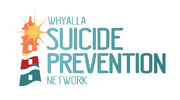Risk Factors &
Protective Factors
QUITE RIGHT
Have you noticed that someone you know is not their normal selves? This may be displayed through physical or non-physical change; you just have a gut feeling that something is not right?
We encourage you to reach in! Don’t be afraid to have a chat with them to find out how they are feeling, sometimes we notice subtle changes in someone and there may be good reason for it.
Sometimes it may appear they are coping however there are certain suicide warning signs you may become aware of. These could include:

Risk Factors & Protective Factors
Risk factors are exactly what they sound like – issues in someone’s life that increase the likelihood (risk) of them acting on suicidal thoughts. While warning signs are more immediate such as sudden changes in behaviour, risk factors are often longer-term challenges that someone may deal with over a period of time.
The more challenges someone has in their life, the greater their risk of suicide.
Experiencing risk factors doesn’t necessarily mean someone will think about or attempt to take their own life.
We all have different ways of coping with challenges; be conscious of is the challenges someone is facing, keep an eye out for changes in their behaviour and check in with them if you’re concerned.
Risk factors can alert us to someone experiencing thoughts of suicide or to the likelihood that someone may act on their thoughts of suicide. If we can identify an individual’s risk factors, then we may be able to help them.
So, what is a risk factor? Risk factors can include both long term issues or stressful life events. They are usually issues someone may face throughout life; they can be challenging to cope with and may lead to thoughts of suicide.
Stressful life events, such as relationship breakdowns, abuse, unemployment, grief and loss to name a few, may impact someone’s wellbeing and can become challenging for them.
You can make a difference by asking a person if they are OK and just listening. Take some time to help someone who may be needing support, you may choose to connect them with friends, family, or services that can help them through this difficult time.
Remember you may feel as if you’re not the right person to provide support and that’s ok. You may choose to highlight your concerns to another person who can check in on their wellbeing, or directly connect the person to someone who can help.

Risk factors can be balanced out to a certain extent by the presence of protective factors. There are a range of protective factors that can help to reduce suicidal thoughts and behaviours, including:


